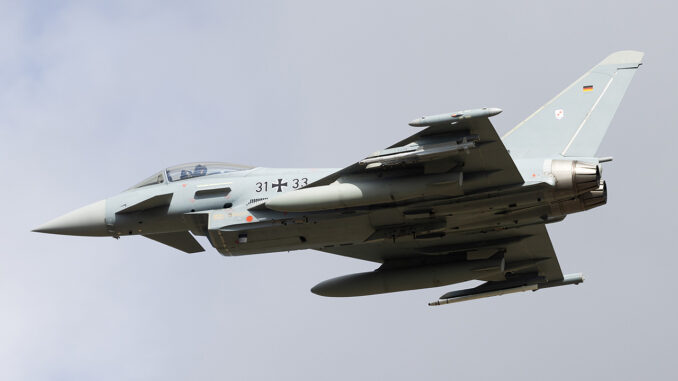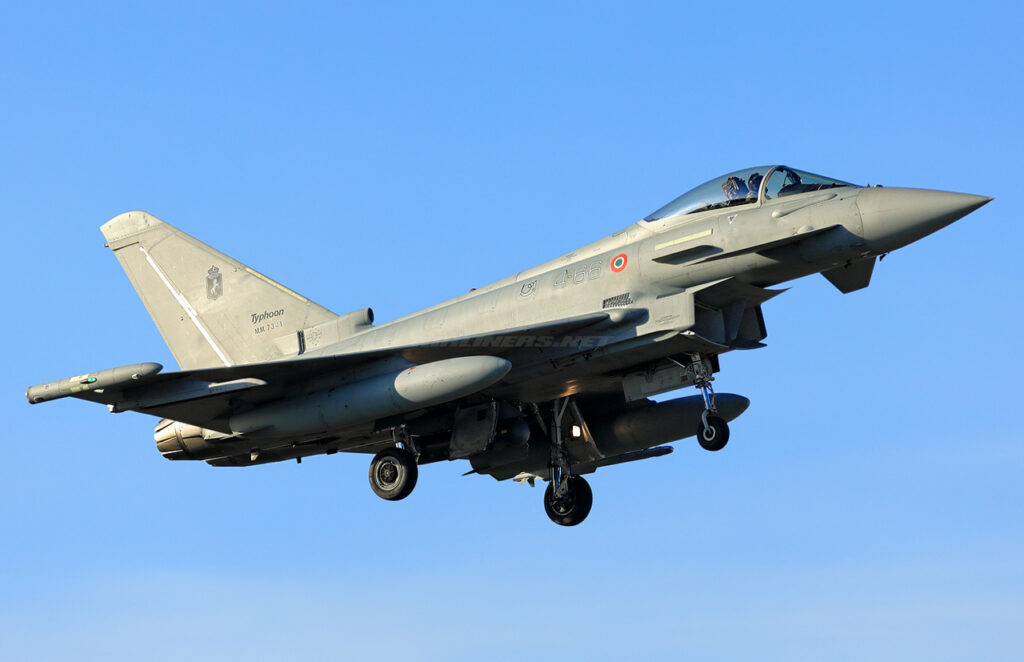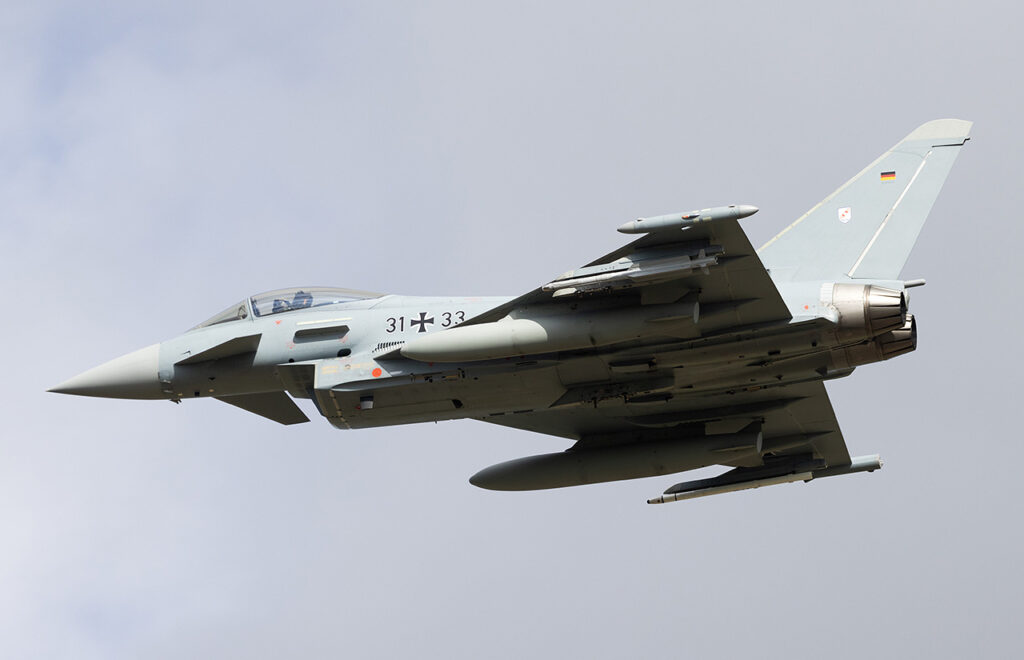
The Eurofighter Typhoon could remain in service until 2060, thanks to the efforts of Airbus and BAE Systems, despite the progress of the Tempest program.
2 minutes to understand
The Eurofighter Typhoon, developed by Airbus and BAE Systems, is scheduled to remain operational until 2060. This extension of the Typhoon’s service life comes in response to speculation that it will be replaced by the Tempest program by 2040. Manufacturing partner countries and external operators will benefit from ongoing fleet maintenance and upgrades. The Eurofighter is also a serious contender for India’s MRFA program, with proposals for significant improvements and the possibility of technology transfer. Finally, the PwC report stresses the importance of additional orders to maintain production and the economic impact of the Eurofighter program.

Keeping the Eurofighter Typhoon operational until 2060
Airbus and BAE Systems have confirmed that the Eurofighter Typhoon could remain operational until 2060. The announcement follows rumors that the Tempest next-generation fighter program would replace the UK and Italian Typhoons by 2040. The statement aims to reassure Typhoon manufacturing partners (UK, Italy, Germany and Spain) as well as external operators (Saudi Arabia, Oman, Austria, Qatar and Kuwait).
The implications of this extension are considerable. It ensures that, for at least the next three and a half decades, Eurofighter fleets will continue to receive maintenance services and technological updates. This continuity is crucial for the air forces that depend on these aircraft for their air superiority and national defense.
Implications for India’s MRFA program
India is looking to acquire medium multi-role combat aircraft (MRFA), and sees the Typhoon as a serious candidate. Airbus has put forward the Eurofighter Tranche 5 model to strengthen its position in this competition. This model is equipped with state-of-the-art technologies, including the E-Scan AESA (Active Electronically Scanned Array) radar, offering excellent situational awareness and first-rate target tracking capabilities.
The possibility of technology transfer makes the Typhoon particularly attractive to India. This is in line with the government’s “Make in India” program, aimed at developing the local defense industry. Although Dassault’s Rafale remains a strong competitor, the Typhoon, with its advanced technological offerings and potential for industrial cooperation, remains a strategic choice for India.
Technological advances of the Tranche 5 model
The Eurofighter Tranche 5 model incorporates innovations crucial to modern air combat. The E-Scan AESA radar, for example, significantly improves the aircraft’s ability to detect and track multiple targets simultaneously. These radars offer increased range and better resistance to electronic countermeasures, essential elements for survival in hostile environments.
In addition, the Tranche 5 features advanced defensive systems and a sophisticated man-machine interface. These features optimize the pilot’s operational efficiency, reducing cognitive load and improving decision-making in combat situations. These improvements are vital for air superiority missions and ground support operations.
The economic impact of Eurofighter: the PWC report
The Eurofighter Economic Impact Assessment report by PriceWaterhouseCoopers (PwC) projects potential sales of up to 287 new aircraft, including those already contracted but not yet delivered. This growth scenario is essential for the economic viability of the Eurofighter program.
The report outlines a baseline scenario involving the maintenance of the current fleet of 680 jets across nine nations, as well as future purchases of Quadriga and Halcon I/II for Germany and Spain. However, to keep the final assembly lines in Germany, Italy, Spain and the UK operational, additional contracts, both domestic and export, are required.
PwC estimates that, in addition to the 83 Quadriga and Halcon I/II jets already planned, a further 74 sales to partner nations and 130 to export nations will be required to maintain production. This continuity is crucial not only for the military capability of partner nations, but also for employment and the economy of the regions where these aircraft are assembled.

Challenges and opportunities in the Eurofighter market
The military aviation market is extremely competitive, and the Eurofighter program is no exception. Competition for India’s MRFA contract is particularly fierce, with rivals such as Dassault’s Rafale and other advanced jets from various global manufacturers. Airbus and BAE Systems need to demonstrate not only the Typhoon’s technological superiority, but also its cost-effectiveness and long-term support potential.
Thanks to the efforts of Airbus and BAE Systems, the Eurofighter Typhoon is set for a long operational career. With continuous improvements and an aggressive market strategy, the Typhoon could well remain a mainstay of global air defense until 2060.
War Wings Daily is an independant magazine.